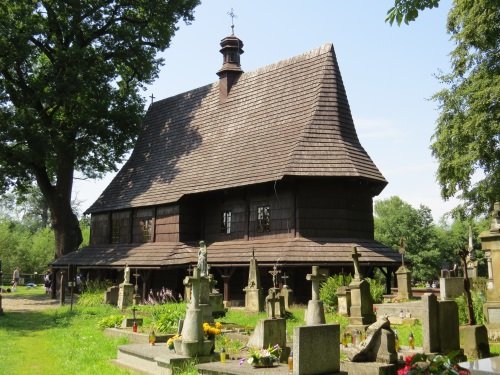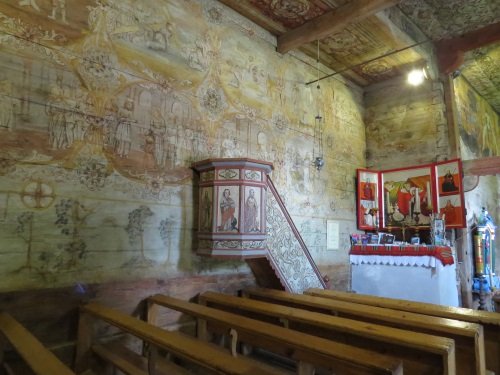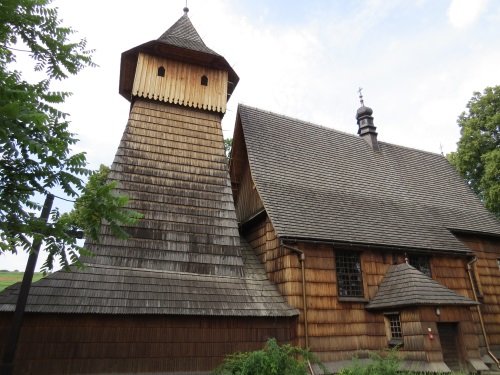Southeastern Poland holds two sets of WH-listed wooden churches, which lie in overlapping areas. It’s an important travel decision whether to mix them and take in as many as possible while driving the most efficient route, or to separate them which also means not being able to visit every single one. I opted for the latter, as I thought otherwise the two sets would blur into one in my memory. I had about 1.5 days to spare in the area, and devoted the first afternoon to two of
The Wooden Churches of Southern Malopolska
.

|
|
Church of St. Leonard (Lipnica Murowana)
|
The most difficult thing about visiting any of the wooden churches is just finding them. I immediately ran into trouble with the first one, the church in Lipnica Murowana. Lipnica is a pretty cute and sizeable town, where in the center I noticed a sign pointing to the "Church of St. Leonard” rightaway. However, when I entered the indicated street I ended up at a large modern church. I wondered how this could have the same name as the old wooden one!
I checked my notes for more clues, and even burned some data on my smartphone to find location details or photos of the surroundings. One of the earlier reviewers wrote about “somewhere northeast of the center, with a large cemetery”. Driving around I found a small church within a big cemetery - but it did not look that old nor made out of wood. I was finally rescued by the waitress from the pizzeria at the central square: "Oh, it's right around the corner and then 200 meters further." It turned out that I had already been close to the right spot in the beginning, and only had to follow the path for a few hundred meters more.

|
|
Interior of Church of St. Leonard
|
Fortunately it was worth all the effort: the St. Leonard Church of Lipnica Murowana is idyllically located between the trees next to a river . A
group of folk singers in traditional costume
were just about to burst into a song when I arrived, they were being filmed with the church in the background. Some other visitors had already dialed the phone number pinned to the church door. The woman with the keys duely arrived, and let us in. This church is best known for its paintings on the wooden walls. On one side even a version of the Last Supper is depicted. The ceiling, pulpit and musicians’ choir are also covered in polychrome painting.
The second church on my list was the one in Binarowa , about an hour away. This church is signposted practically all the way ánd lies along the main road in the village - so no more searching. But I encountered another hurdle: there was a wedding ceremony going on. The doors were open and I could peek inside, noticing a rather glitzy baroque interior. Unfortunately I could not see anything of the “stencilled painted decorative scheme” that is said to be a unique reminder of Late Medieval Europe. I did not want to spoil the wedding day of Adam and Yolanda - I overheard the priest calling their names via the loudspeakers that were in use for those congregants waiting outside.

|
|
Church of the Archangel Michael (Binarowa)
|
As often, the nomination file provides great reading material with more than you ever wanted to know about wooden church construction. The file features 9 churches, of which only 6 went on being inscribed. They were built thanks to influential and wealthy sponsors, who tried to emulate the gothic building styles of the city churches using the locally widely available natural resources of timber. If you’re in the area they certainly warrant a visit, but among the 5 groups of Eastern European wooden churches on the List I rate them the lowest (my favourite may be the
Churches of Peace
).



